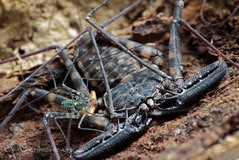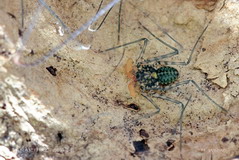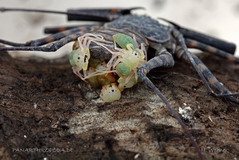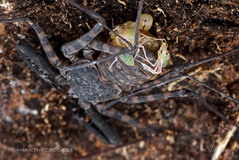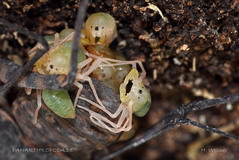- Charinidae
- Charontidae
- Phrynichidae
- Phrynidae

Damon diadema (Simon, 1876)
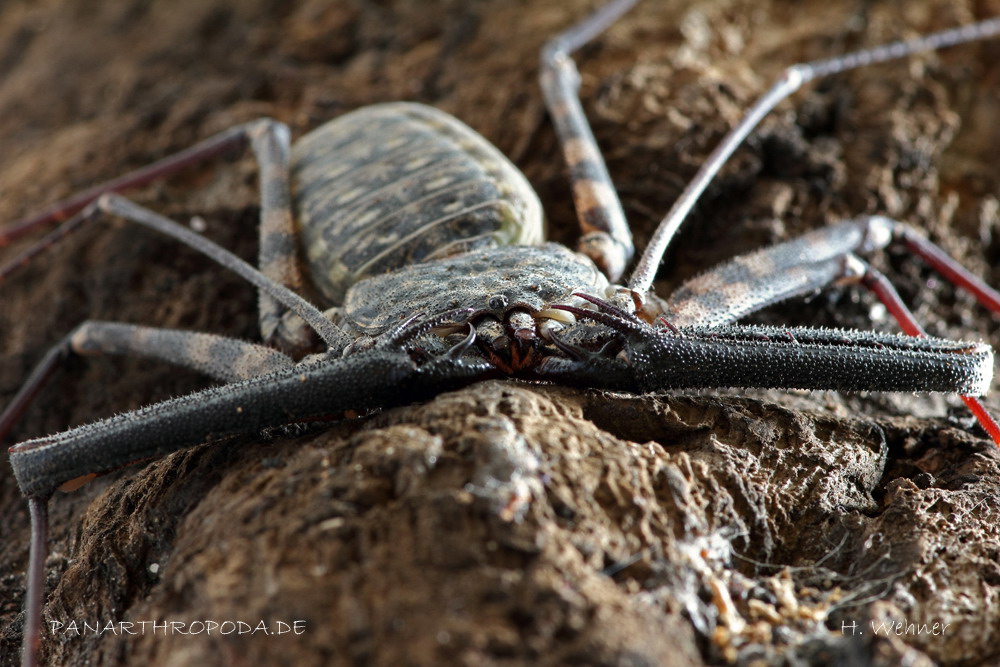
Adult male
Origin and occurrence
Damon diadema occurs along the african eastcoast and further inland in Tansania and Kenia.
Individuals of this species live in tropical rainforests but also in savanna-like areas and caves.
In some kenian caves near the coast Damon diadema and Euphrynichus amanica occur together, however the first mentioned mostly inhabits areas near the entrance and the latter deeper areas with constant darkness. Damon diadema is no strict cavedweller but wanders into those caves from forestareas, when those forests are torn down such cavedwelling isolated populations occur.
Appearance and sexual dimorphism
The species is often falsely sold as Damon variegatus, but in fact one can be quite sure that it is in fact Damon diadema when the animals originated from Tansania since Damon variegatus has only been described at lake Tanganyika in the Mahale Mountain National Park. A certain distinguishing mark between these two species is located on the ventral side of the pedipalp's trochanter. If two thorns are present it will most likely be Damon diadema, if only one is present it could in fact be Damon variegatus (and some other possible species).
Damon diadema is a relatively big species of whip spider which can reach up to 28mm of bodysize and therefore is the biggest of the monophyletic Damon variegatus-group, which is also called the east coast group.
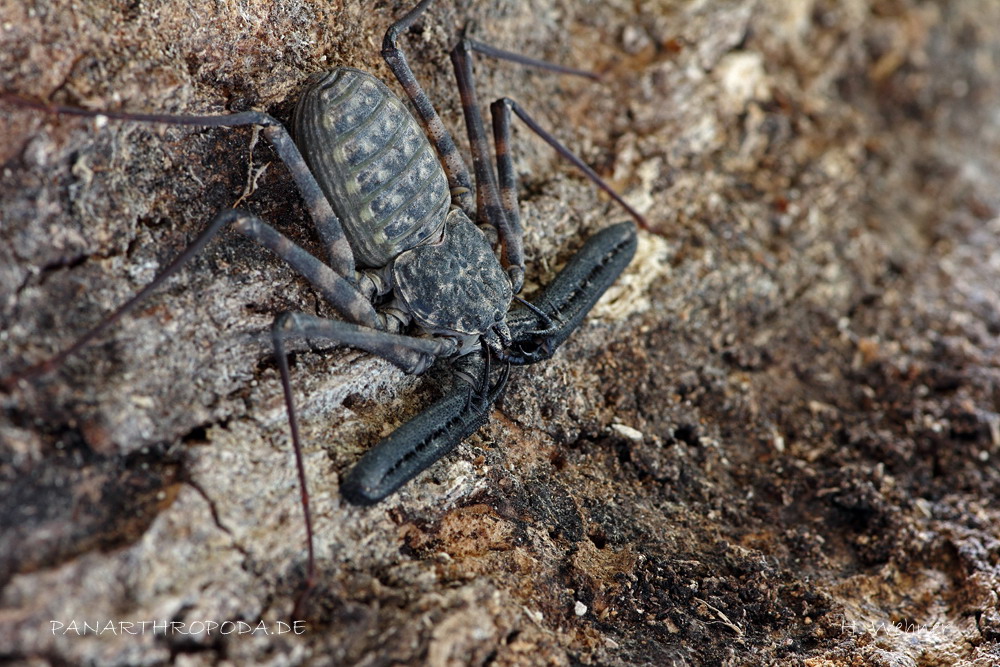
Adult female
This species exhibits a clear sexual dimorphism which can be made out starting in forth instar. The male's pedipals show a quicker growth as the female's, however even in females the pedipalps will be growing faster after the forth instar. After the third molt the third thorn on the pedipalp's basket will be reduced, however it will never fully desappear (which goes for both sexes). Tibia and femur of the pedipals are thorned and rather robust.
Behavior
I keep these animals in groups and was unable to observer any aggressions. Even during molts no animals were eaten, I have however heard of cannibalism on many occasions. The males should be seperated after reaching a certain size, because they will react aggressively agains other males.
I could observe several matings within only a few days which I deduced from the high count of spermatophores in the container (containing one pair).
Keeping conditions
I keep my specimen at 28-30 °C and a relatively high humidity. Damon diadema reacts much more positively to dryness as Euphrynichus bacillifer since it can even withstand a complete drying out of the substrat for a short period of time (but this should only be an extreme condition).
One should offer big surfaces for walking and retreat by using upright cork pieces.
The animals are fed with crickets, that are matched to the size of the whip spiders. I could observer specimen drinking from water bowls.
Mating and raising the young
The mating is highly retualized, however the male does not shove itself underneath the female but conducts it to the spermatophore with the use of its whips. Since I keep them together I can not say how long it takes from fertilization to the deposition of the eggsack or the hatching of the young. One should keep in mind that the humidity in the container with females carrying eggsacks should not be too high since the eggs will start to rot which will most likely kill off the whole litter.
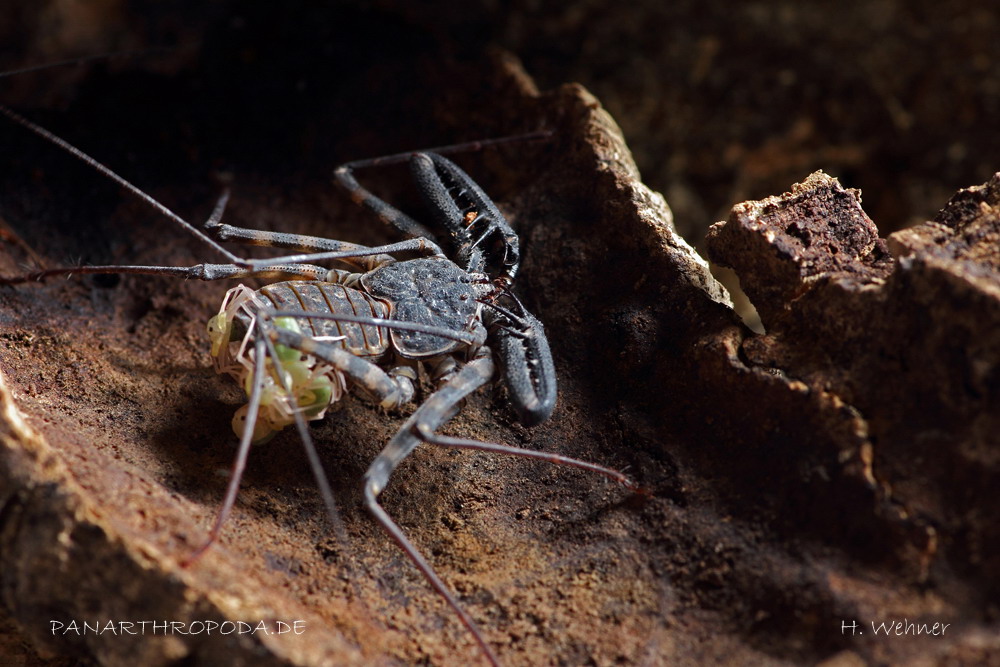
Adult female with litter
In my experience a little bit to dry is better than too moist. Females carrying an eggsack should be kept in a well-arranged container to make the collecting of the young easier. The young can be brought up together in containers with many hideouts.
I bring them up in round cans with stockings slipped over which assures a good airflow and the animals can hang from it during molt.
Diagnosis
This species is easily obtained since it is the most common whip spider in captivity, easily kept and relatively tolerant against fluctuation of humitiy.
F. Schramm, authored 2011



